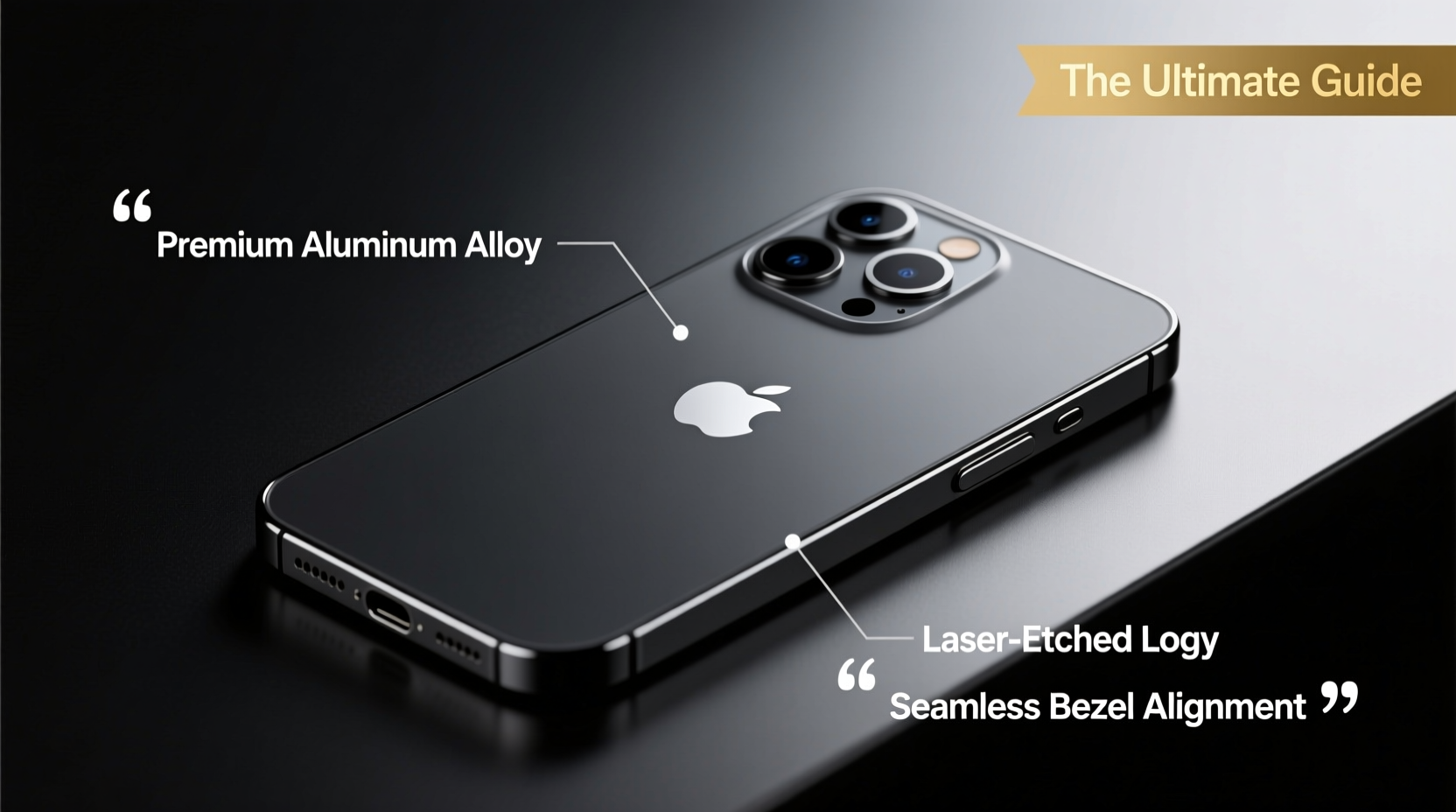Purchasing a replacement enclosure for your iPhone—whether for repair, customization, or resale preparation—can be a minefield. With countless third-party manufacturers flooding the market, distinguishing a genuine high-quality iPhone enclosure from a cheap imitation is critical. A subpar shell can compromise durability, aesthetics, device functionality, and even safety. This guide breaks down the essential markers of authenticity and quality, empowering you to make informed decisions and avoid costly mistakes.
Why Enclosure Quality Matters More Than You Think

The iPhone enclosure isn’t just cosmetic—it’s structural. It houses sensitive components, maintains water resistance (in supported models), aligns internal hardware, and ensures proper antenna performance. Poorly made enclosures often feature misaligned screw holes, incorrect button placements, or incompatible materials that interfere with wireless charging and signal transmission.
Genuine Apple enclosures are precision-machined using aerospace-grade aluminum or surgical stainless steel, depending on the model. They undergo rigorous testing for fit, finish, and electromagnetic compatibility. Third-party alternatives may mimic appearance but fall short in metallurgy, tolerances, and long-term reliability.
Key Features of a Genuine High-Quality iPhone Enclosure
To spot a premium enclosure, focus on these five non-negotiable characteristics:
- Precision Fit: Screws align perfectly without force. The back glass (or metal) sits flush with no gaps.
- Material Authenticity: Aluminum enclosures should feel cold, dense, and slightly textured. Stainless steel models are heavier and magnetically neutral.
- Finish Consistency: Color matches official Apple finishes (e.g., Space Black, Silver, Gold). No streaking, bubbling, or uneven coating.
- Laser-Etched Details: Regulatory text, model number, and “iPhone” branding are finely etched—not printed or stickered.
- Internal Compatibility: Proper cutouts for speakers, microphones, camera bump, and logic board mounts ensure seamless integration.
“Even a 0.1mm deviation in enclosure dimensions can cause microphone occlusion or screen misalignment.” — Daniel Reyes, Senior Repair Technician at iFixMobile Labs
How to Verify Authenticity: A Step-by-Step Inspection Guide
Follow this systematic process when evaluating an iPhone enclosure:
- Examine the Weight: Compare it to an original. Lightweight enclosures usually indicate inferior aluminum or plastic composites.
- Check the Finish Under Light: Tilt the enclosure under direct light. Genuine finishes reflect evenly; fake ones show patchiness or orange peel texture.
- Inspect the Camera Cutout: Edges should be smooth, precisely sized, and elevated slightly to protect lenses.
- Test Button Flexibility: Volume and power buttons should click crisply. Stiff or wobbly buttons suggest low-quality internals.
- Measure Thickness: Use calipers if possible. For example, iPhone 15 Pro Max frame thickness is exactly 8.25mm at the base.
- Verify Internal Rails: These guide the logic board into place. They must match the original in height and alignment.
Mini Case Study: The $40 Mistake
A Brooklyn-based phone technician, Maria Tran, ordered a \"premium grade\" iPhone 14 Pro enclosure online for a client’s refurbishment job. Upon installation, she noticed the speaker mesh was recessed too deeply, muffling sound output. Further inspection revealed the internal grounding contacts were missing, causing Wi-Fi instability. After disassembling and replacing it with a verified OEM-grade part, the issues resolved. Her takeaway? “Price isn’t always the indicator—details are.” She now uses a magnifying loupe to inspect all enclosures before use.
Do’s and Don’ts: Quick Reference Table
| Action | Do | Don't |
|---|---|---|
| Material Check | Use a magnet—genuine aluminum frames are non-magnetic | Assume all silver-metal enclosures are aluminum |
| Finish Inspection | Look for uniform grain and depth in color | Buy based solely on product photos |
| Supplier Vetting | Purchase from authorized resellers or certified refurbishers | Trust sellers with no verifiable history or reviews |
| Installation Test | Dry-fit all components before final assembly | Force screws or press-fit misaligned parts |
Insider Tips from Industry Professionals
Repair shops and refurbishing centers have developed subtle tricks to detect fakes:
- Listen to the Tap: Gently tap the enclosure with a plastic tool. Genuine aluminum produces a crisp, high-pitched ring; counterfeit alloys sound dull or hollow.
- Smell Test: New enclosures should have no strong chemical odor. A pungent smell indicates low-grade adhesives or coatings.
- Serial Number Match: On original Apple enclosures, the internal serial tag should correspond to the device’s original ID if traceable.
Frequently Asked Questions
Are OEM and genuine the same thing?
Not exactly. “Genuine” refers to parts made by Apple for Apple devices. “OEM” (Original Equipment Manufacturer) means parts made by Apple’s contracted suppliers but not necessarily distributed through Apple channels. High-quality OEM can be nearly identical to genuine, but verification is key.
Can a fake enclosure damage my iPhone?
Yes. Poor thermal conductivity in low-grade metals can lead to overheating. Incompatible shielding may disrupt GPS, cellular, or NFC signals. Additionally, ill-fitting backs can compromise dust and water resistance, risking internal damage.
Is it worth paying more for a premium enclosure?
For repairs intended to last, yes. A high-quality enclosure preserves resale value, ensures optimal performance, and reduces the risk of follow-up repairs. Think of it as insurance for your device’s longevity.
Final Checklist Before Purchase
Before committing to an iPhone enclosure, run through this checklist:
- ✅ Confirmed supplier reputation (reviews, certifications, return policy)
- ✅ Verified material type (aluminum, stainless steel, etc.)
- ✅ Precise weight and dimensional match to original
- ✅ Flawless finish with no visible defects
- ✅ Correct internal layout for your iPhone model (e.g., iPhone 13 vs. 14 have different layouts)
- ✅ Includes necessary internal components (grounding fingers, adhesive strips, screws)
- ✅ Comes with warranty or quality guarantee
Conclusion: Invest in Integrity, Not Just Appearance
The true value of a high-quality iPhone enclosure lies beneath the surface—where craftsmanship meets engineering. It’s not enough for a shell to look like an iPhone; it must behave like one. From maintaining signal integrity to protecting delicate internals, the enclosure plays a vital role in your device’s performance and lifespan.









 浙公网安备
33010002000092号
浙公网安备
33010002000092号 浙B2-20120091-4
浙B2-20120091-4
Comments
No comments yet. Why don't you start the discussion?